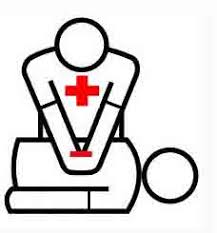 Knowing how to perform CPR is like having insurance—no one wants to have to use it, but having it when you need it could make all the difference.
Knowing how to perform CPR is like having insurance—no one wants to have to use it, but having it when you need it could make all the difference. The simple technique we call cardiopulmonary resuscitation has saved countless lives, and it’s one of the few medical interventions anyone can learn to do.

Its most basic technique, chest compression, requires virtually no training (though training is certainly a good idea); the more sophisticated version, which includes mouth-to-mouth resuscitation, can be learned in a workshop. And defibrillation is becoming more common as light, easy-to-use automatic external defibrillators are required in more and more public places.
Because it’s so simple, the basic techniques have been floating around for hundreds of years, even millennia—but it took a lot of coordination, and an accidental discovery, to put them all together into what we now recognize as CPR.
CPR: A quick how-to
Say a person collapses in front of you on the street. It looks like they had a heart attack. What do you do?
First, check if the person is breathing normally or is responsive. (Asking “are you okay?” is a good way—more on this below.) If they aren’t, and you’re not trained in CPR, do two things: call emergency services (that’s 000) and do chest compressions. Place the heel of your bottom hand in the center of the person’s chest. Press hard, at the pace of about 100 to 120 beats per minute, with few breaks, until emergency responders arrive. Most CPR instructors suggest singing the Bee Gees’ “Stayin’ Alive” in your head—that’ll put you at about the right tempo.
If you are trained, there’s more you can do, like tilting the person’s head back to open up the airway and giving two mouth-to-mouth breaths for every 30 chest compressions. But if you’re not sure, best not to risk it. Get the full training by taking a workshop.
BY THE DIGITS
54%: Proportion of Americans who say they know how to perform CPR, according to a 2017 survey
11%: Proportion who know the correct rhythm for chest compressions
89%: Proportion of Norwegian students trained in CPR
27%: Proportion of Chinese students trained in CPR
<1%: Proportion of Chinese sufferers of out-of-hospital cardiac arrests who survive
2: Minutes within which a rescuer has to start CPR to protect a person’s brain from injury
5: Minutes that compression-only CPR is effective without rescue breaths
$1,275: Cost of the best-selling automatic external defibrillator on Amazon
45%: Proportion of cardiac arrest sufferers who survive after receiving bystander CPR
70%: Proportion of people who survive after getting CPR on the shows Gray’s Anatomy and House